Maybe you are just beginning to delve into the sport of fishing from a kayak, but the kayak has been around for over 4000 years.
Using a kayak for both hunting and fishing was common for American Indian tribes as well as Eskimos.
These days, kayak fishing is piquing people’s interest on a large scale.
It’s a great outdoor sport that puts you in the center of nature and adds that element of the adventure of paddling into areas of water you normally don’t get into.
So, in reality, you’re getting the best of both worlds, fishing, and kayaking; a very powerful combination for a fantastic pastime.
Another simple, but the main reason for using kayaks in fishing is because kayaks are designed for safety and stability, and are far less expensive than powered motorboats.
If you want to know why you should purchase a kayak for fishing, there are a whole bunch of reasons, and each one is more convincing than the other.
- First off, they are affordable
- They are low maintenance
- You save on gas and any sort of batteries
- They are no problem to store or move them when you want to
- On the water, they’re quiet, so the fish won’t scare away
- They are basically an optimal way to fish
When it’s time to buy your first kayak or retiring your old one and checking a new one, you want to make sure to buy based on professional and expert advice.
So, let’s cover the key factors you’ll want to look into before making a kayak purchase.
Length Is Important
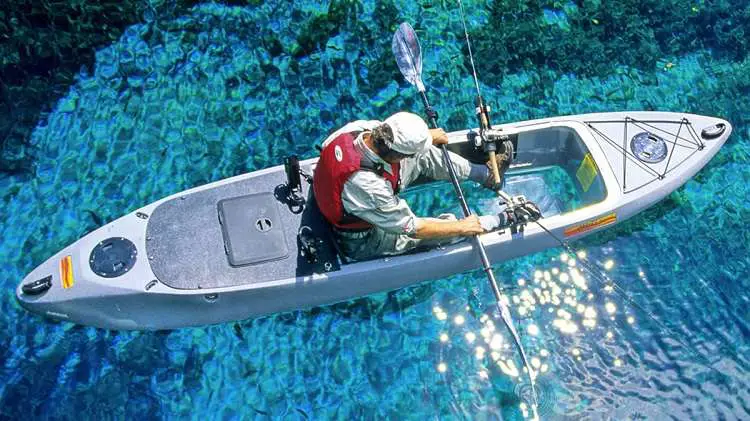
Because there are so many to choose from, you’re going to have to narrow down your choices by first looking at the length you want yours.
Shorter kayaks will be much more maneuverable than longer ones as you’re moving in them.
This is important if you’re river fishing, and we’ll cover the type of waters you fish in later in this article.
Checking for the right length is also important in order to know if it’s going to fit into or onto your vehicle smoothly and easily.
The longer the kayak, the faster it will be and the more easily it will cover distances.
But you’ll probably give up, in return, better maneuverability in tight spaces and ease of transporting the kayak to launch from different sites.
Generally, you will want a kayak no shorter than 10 feet. You can consider a 12-foot kayak since it gives you the best in speed and maneuvering.
Standing Up Comfortably: Width
One question that often surpasses people that they have to ask themselves is if they will be standing up in the kayak?
This is why the width is important. The ability to stand up on the kayak will give you elevation to fish in a greater area by sight fishing.
This makes it possible to see your cast. So, some boats will just be more stable when fishing while standing because they’re wider.
Avoid a V-shaped hull if you intend to stand up while fishing since these can tip easier. Opt for a more stable tunnel or flat-bottom hull.
The minimum width for a fishing kayak is 30 inches or 76 centimeters, give or take; more can better, but only up to a certain point.
Don’t only focus on wide means stability. Other factors can also equal stability, such as a low seat.
It’s Not About Muscle: Weight
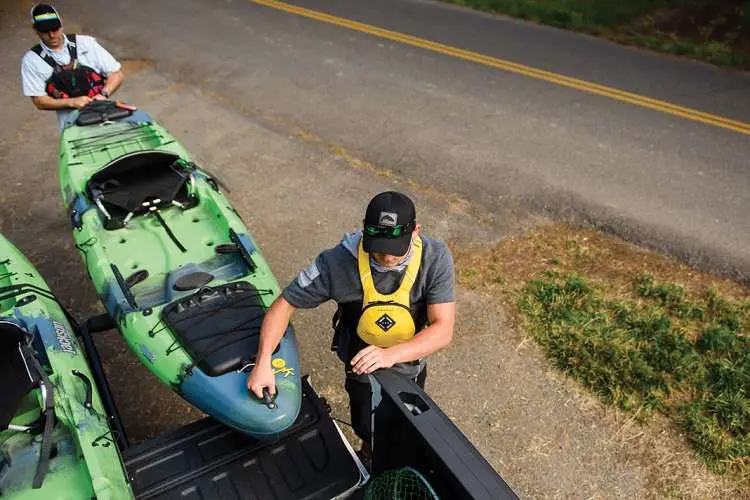
Remember that you’re going to be carrying your kayak in and out of a truck or upon a car rack to transport it, so you have to buy something that you can handle in and out of the water.
If you buy something that you can barely manage on the water, you will probably end up going a lot less often than if you had the lighter option.
A short kayak can be around 45 pounds, which makes it easy to transport or carry by yourself.
Also, choose a kayak with a weight capacity that is at least 100 pounds more than your own body weight.
Depth Is Not To Be Taken Lightly
You should put into consideration your own height.
If you’re tall or long-legged, a deeper depth of the hull is going to be more comfortable for you. It also provides more storage space for your gear.
The shallower the hull, the more wind will have an effect on the kayak.
Your Body Type Matters
While considering the size of the kayak you want, also consider your own body size.
A bigger, broader person is going to need more room to be able to sit comfortably, especially that most people who love their kayak want to spend hours in it.
So if there’s anything to know, it’s that fishing kayaks do not have a ‘one size fits all’ category.
When choosing a fishing kayak, length, width, weight, and depth will be the first things to consider, but definitely not the only things and you want to get online and start a search using this guide to compare the different kayaks available to you.
Other major factors and features to look into will include:
Sitting In Vs Sitting On Top
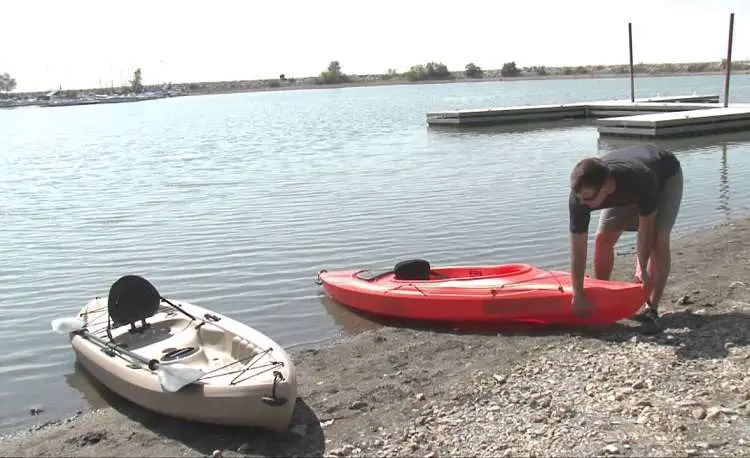
These are typically the two choices you have.
A sit-in kayak means just that; you’re sitting in the kayak while sitting on top, you’re sitting elevated and not in the kayak.
Even if you can use a sit-in kayak, the preferred choice for fishing would be a sit on top one, and this is for several reasons, such as:
- Sit on top models have more capacity to store your fishing gear
- Sit on top are easier to customize for your own needs
- It’s easier to stand in a sit on type designed yak
- If you happen to fall out, it’s easier to hop back into the sit on top type than the sit-in type
- It’s more difficult to get in and out of a sit-in kayak
- Sit in style can be prone to flooding when water gets into it, unlike sitting on the top model which is self-bailing, so any water that enters goes right back out again
- In a sit-in, you’d be sitting below the surface of the water, which gives you a disadvantage when fishing, since your view isn’t clear
The sit-in type will be cheaper, and there’s nothing to say you can’t use it for fishing, but professionals will probably advise you to buy a sit on top.
The choice is yours, but when it comes to material polyethylene roto-molded is the more common choice.
There are thermoforming kayaks. Thermoforming ones are very high quality in the high-end of fishing kayaks.
But on cheap models, they might not be considered reliable. So, the most commonly used materials for kayaks are:
- Plastic (Polyethylene) which is cheaper but not heavier
- Fiberglass: Most mid-priced and mid-ranged kayaks are made from fiberglass
- Composite: For lightweight kayaks, but are pricey
Pedal vs Paddle: Know The Difference
This is another feature that you’ll be choosing between, so here’s more information on this.
Pedal
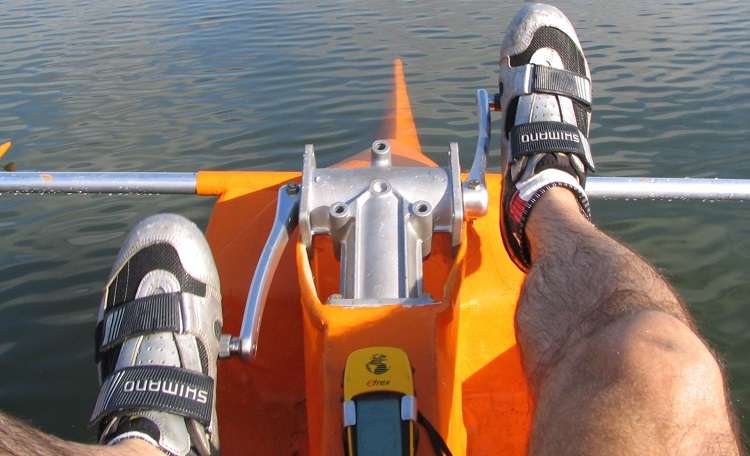
Most people are more familiar with the paddle type, but the peddle is usually the hands-down choice when it comes to fishing kayaks.
It’s popular for anglers and allows you to go on the water hands-free, which translates into more casting ability.
Typically, a peddle type is going to be a bit more expensive than the paddle type.
There is some debate if you can go as shallow with a peddle type than with a paddle type, but basically, peddle types can go as shallow.
Yet keep in mind that the pedal type might require you to remove the pedal drive in shallow water, which can be a nuisance.
Two other sacrifices you might need to make, besides paying more, if choosing a peddle type one, are giving up some space and adding more weight.
Paddle
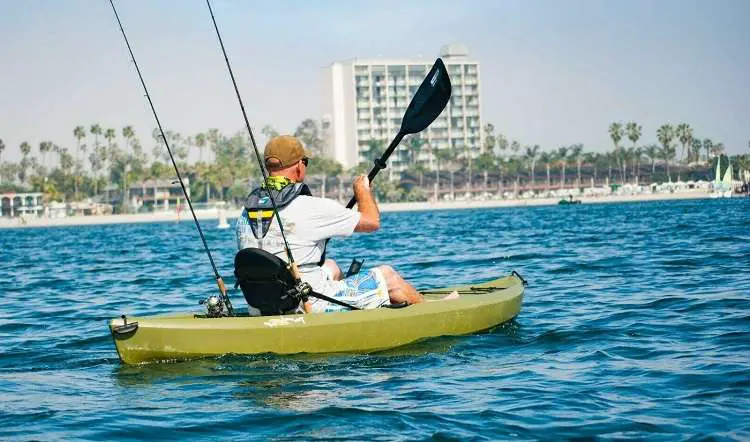
For smaller water areas, or if you don’t usually fish covering a long distance of water, a paddle-type might work just as well for you.
However, you will have to stop and put your paddles down with each opportunity to catch fish.
The thing is, even in the peddle type, it’s advisable to take paddles along with you just in case something goes wrong with the pedal, even if that is highly unlikely, but no one wants to get stranded.
So you might be carrying paddles anyway.
A Kayak For Every Water Type
With the world being covered with 90% of water, there’s a lot of different bodies of water. You might be fishing in lakes, or maybe you do more fishing in streams and rivers or creeks.
Heavier kayaks, say weighing around 70 pounds, could work well for lakes, but your fishing would probably go better in streams and shallow rivers with a lighter weight one, in order to paddle or peddle up a creek or even lug it over your shoulder and carry it to the spot you want to launch the yak from.
Albeit, these kinds of bodies of water might be less fishable, and you will sacrifice some extra storage space with lighter kayaks, but they are more portable if that is your concern.
To have a better idea of which kayaks do better in certain waters, we’ve compiled here a few things to know:
Lakes: Where there is both flowing and still waters, a smaller, recreation type could easily work for you, whether it’s a sit-in or sit on top kayak.
Coastal: You can expect wind, waves, currents, tides and more to accompany you while kayaking. So, a sit-in touring boat with a rudder, fixed tracking fin or skeg is your best choice.
Rivers: On a river, you want a stable, sturdy craft that is agile. That might be a sit-on-top yak or a shorter, more stable recreational sit-in yak.
Know Your Lingo!
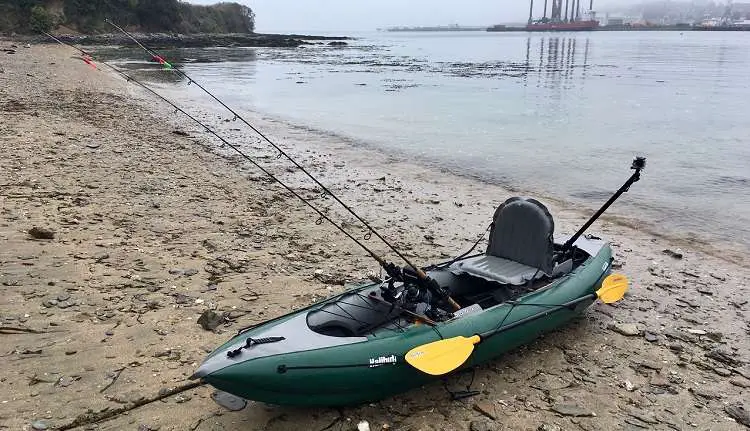
When shopping around, you’re also going to hear some vocabulary you might not be familiar with if you’re new to this. To help you out, here’s a small glossary:
- Bow: The front of a kayak.
- Hull: The bottom of the kayak
- Skeg: This is a simple dropdown fin that helps prevent a strong side wind from blowing you and the kayak off course.
- A tracking fin: It’s a bit similar in benefit, but unlike a skeg, it cannot be retracted while you’re paddling. They are more commonly found in inflatable kayaks. You are given the option of removing a tracking fin before paddling if it’s more important to turn quickly than to stay on course.
- A rudder: This is a fin located at the back of the watercraft which flips down. It’s not fixed in one position. The rudder is dropped into the water and can be maneuvered by the foot pedals.
- Hatches: These are dry interior storage areas.
- Backband: This band is located behind the seat and can be tightened to keep the paddler in an upright seated position.
- Foot braces: These are small, adjustable plastic plates to brace your feet against when paddling. If you want more leverage with every stroke, you need foot braces.
Special Kayaks
There are other types of kayaks that you might be interested in looking into. These include:
Inflatable
These moveable kayaks are made with a tough material and are surprisingly very strong. An inflatable kayak can be set up or put away in its carrier, in around 15 minutes.
Kayak design engineers have designed inflatable kayaks that can handle strong currents, but not all inflatable ones can do that, so it’s important to know the type of water you’ll be using an inflatable one in.
In general, they are safer than what most people would expect and puncture-proof in reasonable conditions.
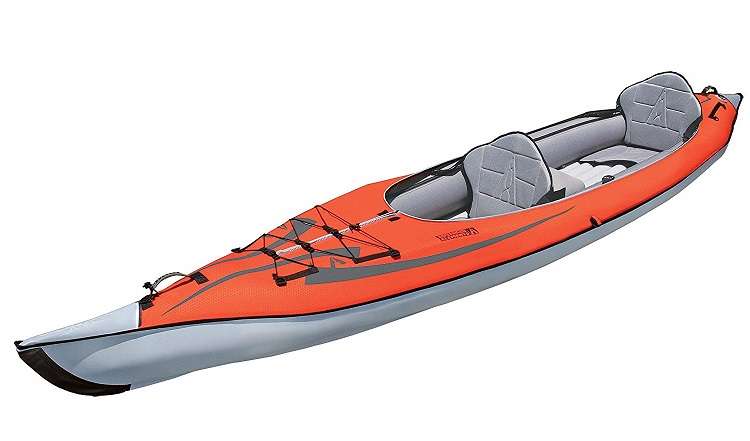
Foldable
No matter how much you love kayak fishing, your kayak is going to be spending more time out of the water than in it, and not everyone lives in a house with a garage.
You might be living in a modest apartment, so kayak makers have put you in mind.
Some foldable kayaks are manufactured from inflatable exteriors, and others are called origami kayaks which are made of a flexible, non-inflatable, material that folds against itself to create a rigid outer hull.
You will want to look into such things as folding size and strength if choosing a foldable style.
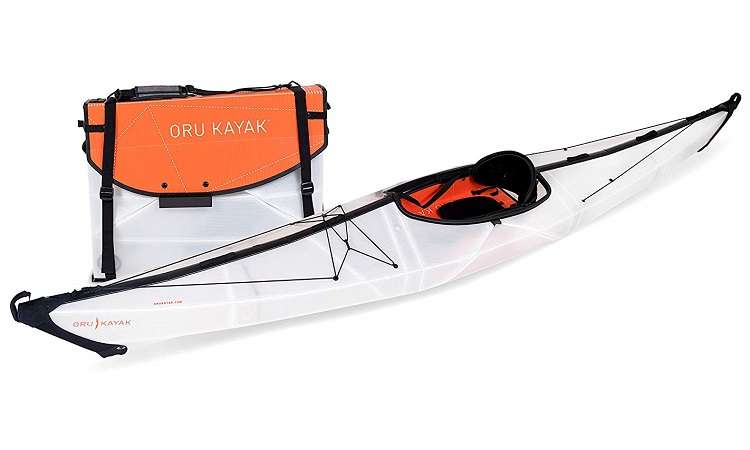
Tandem
When you want to go kayaking with a buddy, ask about tandem kayaks which are two-seaters.
A tandem kayak can solve the problem if you’re considering to buy two single kayaks or one tandem.
Like with anything else, other problems might arise, since you won’t be the only one paddling so you might not get to call all the shots or have all the room you want.
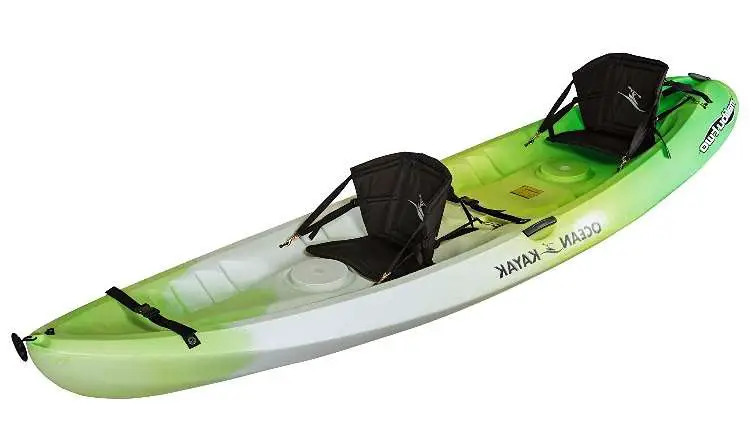
Inexpensive, Not Cheap
When it’s time to purchase your kayak, make sure you differentiate between something cheap and something inexpensive.
Buying cheap could very well give you buyer’s remorse.
You’ll find things falling apart very quickly, and you’ll wish you put in some extra bucks to get something inexpensive and affordable.
Thankfully, there are so many lines and designs of very slick, cool-looking kayaks that are affordable and you’ll enjoy your fishing time to the max.
We also have a guide on what type of fishing gear you may need. You may want to check it out.
In case you want to check out some options on Amazon, below is the list of the best selling fishing kayaks.
